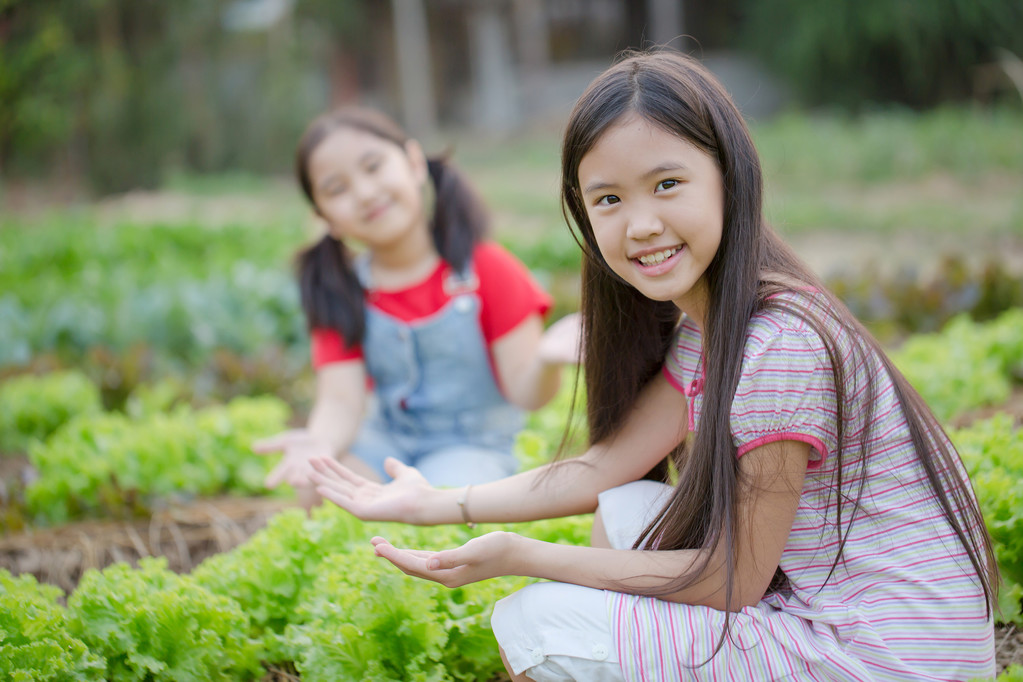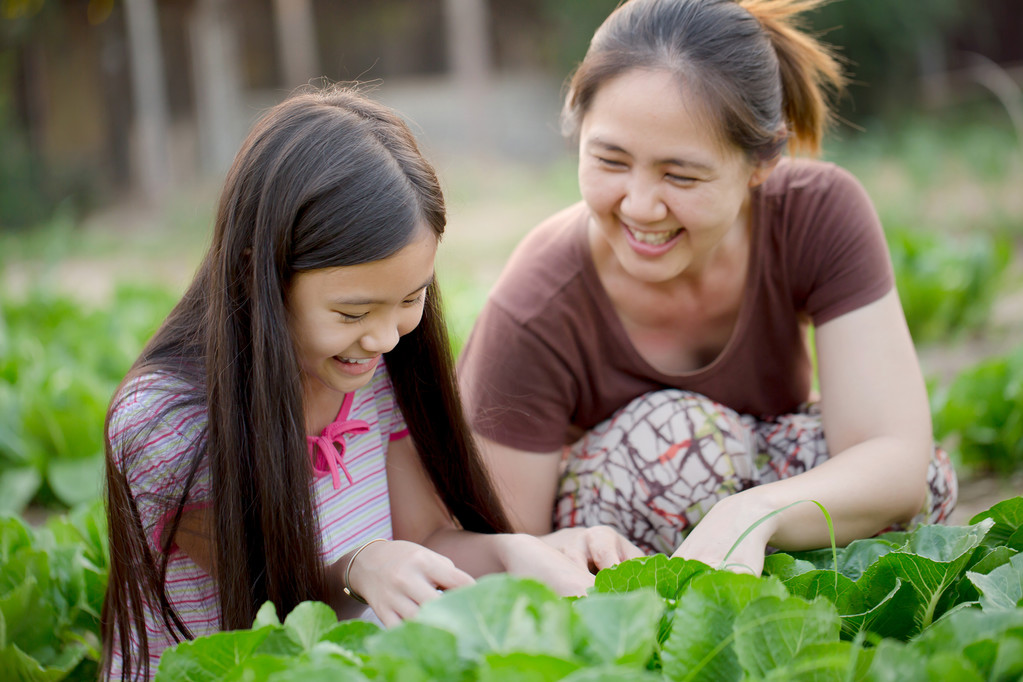Discover effective strategies and tips for teaching gardening to 6-7 year old children.
How to Teach Gardening to 6-7 Year Old Children
Introducing gardening to young children can be an incredibly rewarding and educational experience. Not only does it provide an opportunity for kids to learn about nature and the environment, but it also fosters a sense of responsibility and a love for the natural world. In this article, we will explore the importance of gardening for children in the 6-7 year age range and provide tips on how to effectively teach gardening to this young age group.

Understanding the Importance of Gardening for Children
Gardening offers a wide range of benefits for young minds. Beyond being just a fun activity, it allows children to develop a deeper connection with nature and gain an understanding of where their food comes from. By getting their hands dirty, kids can learn about the importance of nurturing plants and the magic of watching them grow.
But gardening is not just about getting some fresh air and exercise. It offers so much more! When children engage in gardening, they are not just planting seeds; they are planting the seeds of knowledge and curiosity. Gardening stimulates their senses and opens up a world of exploration and discovery.
As children dig their little hands into the soil, they are not just getting dirty; they are connecting with the Earth. They feel the texture of the soil, the coolness of the water, and the warmth of the sun. They witness the miracle of life as tiny seeds sprout and grow into vibrant plants. Gardening allows children to witness firsthand the wonders of nature and the incredible power of growth and transformation.
Benefits of Gardening for Young Minds
Gardening stimulates creativity and teaches children to appreciate the beauty of nature. It also promotes physical activity, as digging, planting, and watering plants require movement and coordination. Moreover, working in the garden can be a great stress-reliever and helps kids develop patience and responsibility.
But the benefits of gardening go beyond the physical and practical aspects. It nurtures a child’s imagination and encourages them to think outside the box. They can create their own little world within the garden, designing their own miniature landscapes and fairy gardens. Gardening allows children to express themselves artistically, as they choose the colors and shapes of the flowers they want to plant.
Furthermore, gardening provides a sense of accomplishment and pride. When children see their plants thriving and blooming, they feel a sense of achievement. They learn that with care and dedication, they can make a positive impact on their surroundings. This boosts their self-esteem and fosters a sense of empowerment.
Fostering a Love for Nature in Kids
Through gardening, children can develop a sense of awe and wonder for the natural world. By observing butterflies, bees, and other insects that visit the garden, kids can learn about the interconnectedness of plants and animals. This not only fosters a love for nature but also instills a sense of environmental stewardship from a young age.
As children witness the delicate dance between flowers and pollinators, they understand the importance of biodiversity and the role they can play in preserving it. They learn about the symbiotic relationships that exist in nature and the importance of creating habitats for wildlife. Gardening becomes a gateway to learning about ecosystems, food chains, and the delicate balance of nature.
Moreover, gardening can be a source of inspiration for future environmentalists and scientists. By sparking curiosity and nurturing a love for nature, it lays the foundation for a lifelong passion for environmental conservation and sustainability.
In conclusion, gardening is not just a simple activity for children. It is an opportunity for them to connect with nature, develop important life skills, and foster a love for the environment. So, let’s encourage our little ones to put on their gardening gloves, grab a shovel, and embark on an adventure that will not only enrich their lives but also contribute to a greener and more sustainable future.
Preparing for the Gardening Lessons
Before diving into the world of gardening, it’s important to prepare and create a safe and enjoyable environment for your little gardeners. Gardening is not only a fun and educational activity, but it also teaches children valuable skills such as responsibility, patience, and the importance of taking care of the environment.
One of the first steps in preparing for gardening lessons is choosing the right tools for kids. Investing in child-sized gardening tools that are safe and easy to handle is essential. Children have smaller hands and less strength compared to adults, so it’s important to provide them with tools that are suitable for their size. Make sure the tools have rounded edges to prevent any accidental injuries, and are lightweight so that children can easily maneuver them.
By providing kid-friendly tools, you can make the gardening experience more enjoyable and less intimidating for young learners. Children will feel empowered and excited to use their own set of tools, just like adults do. This sense of ownership will boost their confidence and make them more eager to participate in gardening activities.
In addition to choosing the right tools, creating a safe gardening environment is crucial. Ensure that the gardening area is free from harmful substances, such as chemical pesticides and sharp objects. It’s important to teach children about the potential dangers in the garden and how to avoid them. Teach them basic safety rules, such as washing hands after handling soil and plants, and wearing appropriate clothing for gardening activities.
Furthermore, it’s a good idea to introduce children to the concept of organic gardening. Explain to them the benefits of using natural fertilizers and pest control methods instead of harmful chemicals. Teach them about composting and how it helps to enrich the soil and reduce waste. By instilling these eco-friendly practices from an early age, children will develop a deep appreciation for nature and understand the importance of preserving the environment.
Another aspect to consider when preparing for gardening lessons is planning the layout of the garden. Involve children in the decision-making process and let them choose the plants they want to grow. This will give them a sense of ownership and responsibility for their garden. Encourage them to research different plants and their specific needs, such as sunlight, water, and soil requirements. This will not only enhance their knowledge but also teach them valuable skills in problem-solving and decision-making.
Lastly, make sure to allocate enough time for gardening activities. Gardening is a hands-on experience that requires patience and dedication. Set aside regular time slots for gardening lessons and encourage children to observe the growth of their plants over time. This will teach them the importance of perseverance and the rewards of hard work.
In conclusion, preparing for gardening lessons involves choosing the right tools, creating a safe environment, introducing eco-friendly practices, planning the garden layout, and allocating enough time for gardening activities. By taking these steps, you can create a nurturing and enriching experience for your little gardeners, fostering their love for nature and instilling valuable life skills that will stay with them for years to come.
Simple Gardening Concepts for 6-7 Year Olds
When introducing gardening to young kids, it’s important to start with simple concepts that they can easily grasp.
Gardening is not only a fun and enjoyable activity, but it also teaches children valuable lessons about nature, responsibility, and patience. By engaging in gardening, kids can develop a deeper appreciation for the environment and learn how to care for living things.
Introduction to Basic Plant Anatomy
Teach children about the different parts of a plant, such as roots, stems, leaves, and flowers. Use visual aids, such as diagrams and real plants, to help them understand how each part contributes to the overall growth and health of the plant.
Exploring the intricate world of plant anatomy can be a fascinating journey for young minds. They will discover that roots anchor the plant in the soil, absorb water and nutrients, and provide support. Stems act as highways, transporting water and nutrients from the roots to the leaves and flowers. Leaves, with their vibrant colors and unique shapes, are the powerhouses of plants, converting sunlight into energy through a process called photosynthesis. And, of course, flowers are the beautiful and often fragrant reproductive organs of plants, attracting pollinators and eventually producing seeds.
Understanding the Growth Cycle of Plants
Explain the concept of the plant life cycle to children, starting from seed germination to plant growth and eventually flower or fruit production. Encourage them to observe and document the changes they see in the plants over time, allowing them to witness the magic of nature firsthand.
As children embark on their gardening journey, they will witness the miracle of life unfolding before their eyes. They will learn that every plant starts as a tiny seed, waiting patiently in the soil for the right conditions to sprout. With water, sunlight, and nutrients, the seed germinates, sending a tiny shoot upwards. This shoot grows into a young plant, developing leaves and stems that reach towards the sky.
With each passing day, children will notice their plants growing taller and stronger. They might even witness the emergence of delicate buds, which will eventually burst open into vibrant flowers or transform into delicious fruits. This process of growth and transformation will captivate their imagination and instill in them a sense of wonder and awe for the natural world.
By involving children in the observation and documentation of these changes, they will develop important scientific skills such as recording data, making predictions, and drawing conclusions. These skills will not only benefit them in their gardening endeavors but also in their overall academic and personal growth.
Fun Gardening Activities for Kids
Make gardening enjoyable and exciting with these fun activities specially designed for young children.
Planting Seeds and Watching Them Grow
Let children choose their favorite vegetable or flower seeds to plant. Show them how to prepare the soil, plant the seeds at the correct depth, and water them gently. Watch their excitement as they anxiously wait for the first sprouts to appear.
Fun with Watering and Weeding
Teach children the importance of regular watering and weeding to keep plants healthy. Show them how to water plants without overwatering and how to identify and remove weeds. Make it a game by challenging them to water individual plants accurately or find the most weeds in a designated area.
Teaching Responsibility Through Gardening
Gardening provides an excellent opportunity to teach children responsibility and the importance of caring for living things.

Assigning Gardening Tasks to Children
Give children specific gardening tasks that are age-appropriate, such as watering plants, pulling weeds, or harvesting ripe vegetables or fruits. Discuss with them why their assigned tasks are important for the overall health and well-being of the garden.
Encouraging Regular Care for Plants
Teach children the importance of regular care for plants, such as checking for pests, providing proper nutrients, and ensuring adequate sunlight. Encourage them to make a schedule, reminding them of their gardening duties and celebrating their successes as little plant caretakers.
In conclusion, teaching gardening to 6-7 year old children can be a rewarding and enriching experience. By understanding and embracing the importance of gardening for children, preparing the right environment, introducing simple gardening concepts, and engaging in fun activities, we can help children develop a love for nature, learn about responsibility, and cultivate their green thumbs from an early age.



